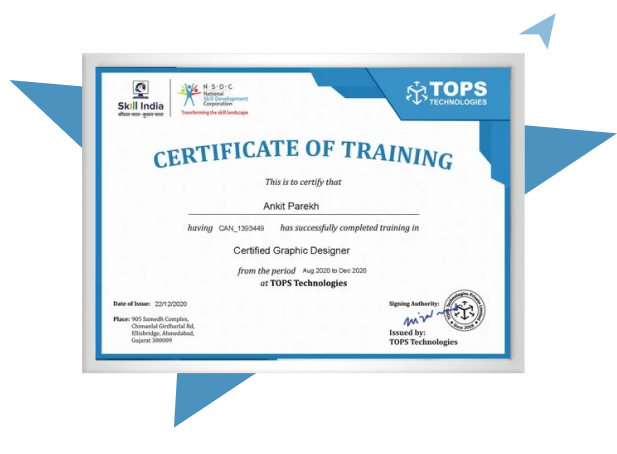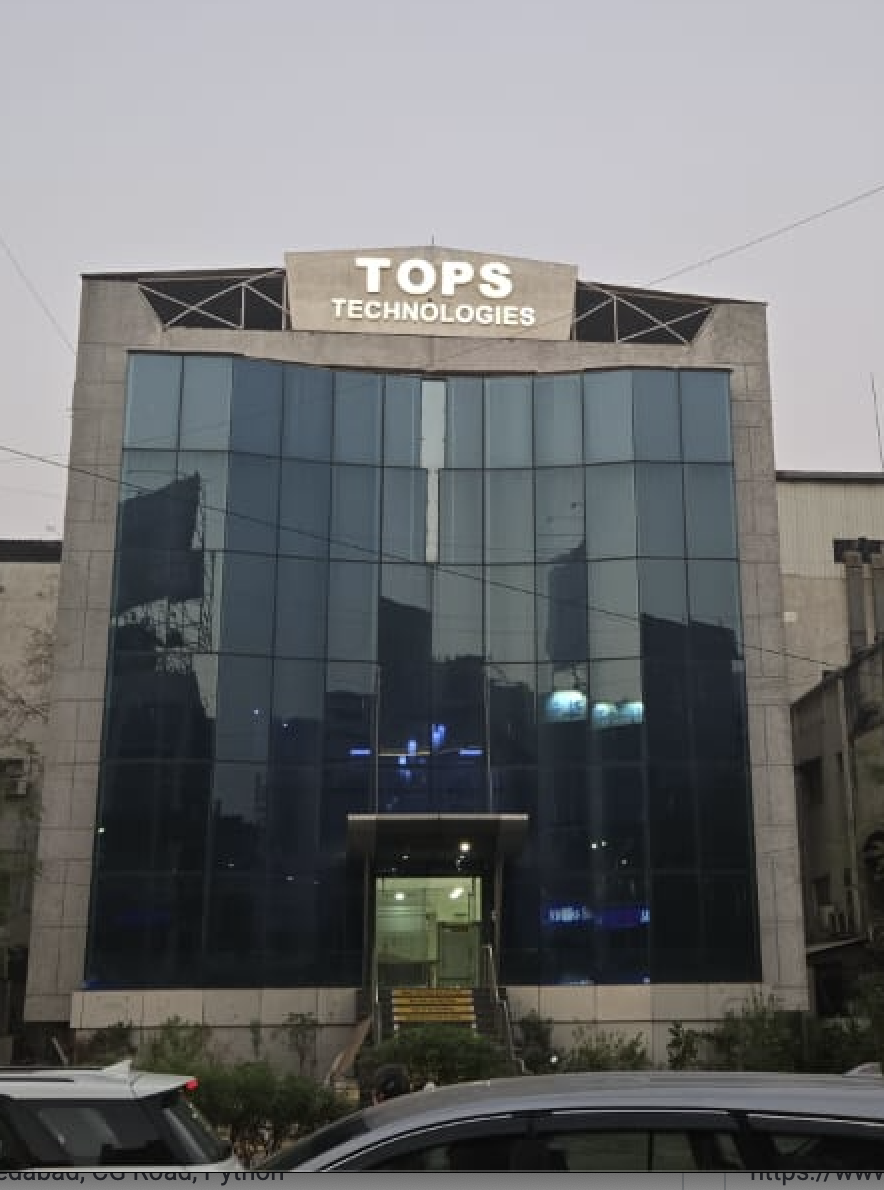Our Facts and Figures
1 Lac+
Student Placed
3000+
Companies TieUp
19+
Offices in India
50+
Industry Courses
Get 100% Job Assistance by enrolling in Certified Internet Of Things Training
Key Highlights
Limited Students Batch
Personalised Attention
Highly Qualified Teachers
Flexible Batch Timings
Interactive Learning
Live Projects
Career Support
Job Oriented Training
IOT Course Highlights
Industry-Driven Curriculum for Freshers and Experienced Professionals
Move towards a highly rewarding career with the Internet of Things training in Surat. TOPS Technologies Training center at Surat offers a hands-on training process that matches the industry standards. IoT Training course in Surat at TOPS Technologies holds a higher chance to get absorbed in the IT industry. Regardless of your previous education, the IOT training at TOPS Technologies offers a one-stop destination in reaching your goals as a highly proficient IoT developer.
Candidates undergoing the IoT Training course at Surat will learn about exchanging the data between the connected devices, smart devices, sensors, software and other things using Raspberry Pi or Arduino software. Redefine your career path with a reliable and high-quality training course at TOPS that holds a record of placing over 10,000 candidates at the right place in the IT industry with desiring and deserved packages.
To make sure that you get into the best IoT Development Company, head straight to TOPS Technologies for the Internet of Things Training in Surat. Attend a risk-free giving you a complete idea about the learning methodologies and curriculum at TOPS Technologies Surat training center in Surat.
40%
Average Salary Hike
4.5 Lacs
Highest Salary
3000+
Hiring Partners
Join Our Free Upcoming Webinar
Graphic Design with UI / UX
19 Jul 2025, 11:00 AM
Trainer
Gaurav singh tomar
(Sr. Technical Trainer)
All About Full Stack Development
19 Jul 2025, 03:30 PM
Trainer
Rahul Sanghavi CG
(Sr. Technical Trainer)
Want to protect yourself against Malware
19 Jul 2025, 05:00 PM
Trainer
Parag Parmar
(Sr. Technical Trainer)
How to Find the Bug in Manual Testing
20 Jul 2025, 11:00 AM
Trainer
Rahul Sanghavi CG
(Sr. Technical Trainer)
How to Crack the TCS Interview
19 Jul 2025, 02:00 PM
Trainer
Nisarg Jani
(Full Stack Engineer at Cognizant, Ex. System Engineer, TCS)
IOT Course Curriculum
Download Curriculum- Introduction of IoT
- The Internet ofThings
- Introduction to Cloud Computation
- IOT Application of different domain
- Arduino Device
- Arduino IDE
- Connectivity With Serial Port
- Serial Output
- Device Connection With Arduino
- Device Controlling using Arduino Programming
- Variables
- Basic operation(add, subtract,multiply)
- Basic Variable type (string,integers)
- Concatenating String
- Booleans (True/False)
- Lists
- Lists Methods (Append, Extend)
- Adding Lists Together With +
- Sets
- FOR Loops
- Indexing
- Splitting Strings
- Tuples
- Dictionaries
- Working With Sensors
- PIR Motion sensor
- how to use Ultrasonic Sensor
- Work With DHT11 Sensor
- How to use Bluetooth Module(HC-05)
- Connect ESP8266 With Arduino For Wi-Fi Connectivity
- Connect Soil Moisture sensor With Arduino
- How Web Service Working
- Creating web service
- Fetching data in Arduino using web service
- Controlling device using web services
- MQTT
- DDS
- AMQP
- LoRa-WAN
- CoAP
- GSM
- Wi-Fi
- Establish Remote Desktop Connection
Our TOPS Training Centers in India
Course Key Features
Skills Covered
Get Training Certificate by Government
Recognized NSDC/Skill India

- National Skill Development Corporation
- Supported by the vision of PM Shri Narendra Modi
- Certification by NSDC SkillIndia
- Valid for all Jobs and College Training
- International Recognition

FAQ
Arduino is an open-source microcontroller platform used for IoT prototyping and learning. It allows easy sensor integration and control using C/C++ in a beginner-friendly environment. It's ideal for building simple IoT projects and experimenting with hardware.
After completing the IoT course, you can apply for roles like IoT Developer, Embedded Systems Engineer, IoT Solutions Architect, Automation Engineer, and IoT Test Engineer across industries like smart home automation, healthcare, manufacturing, and agriculture.
IoT security is a major concern due to device limitations, weak authentication, and lack of encryption. Many devices are released without proper security updates or protocols. To ensure safety, developers and users must implement strong passwords, encrypted communication, frequent firmware updates, and secure network practices like segmentation.
IoT devices face threats such as:
- Unauthorized access through weak passwords
- Data breaches and leakage
- Botnet attacks like Mirai
- Eavesdropping on unencrypted communication
- Physical tampering
These risks stem from poor security designs and lack of standardization among IoT manufacturers.
Securing IoT devices involves:
- Using strong passwords and authentication
- Encrypting all data transfers
- Regular firmware updates
- Disabling unused ports or features
- Using firewalls and secure Wi-Fi
- Monitoring devices for unusual activity
- A layered approach improves overall protection.
IoT privacy involves how personal data is collected, stored, and used by devices. Smart gadgets may gather sensitive information such as health or location data. Key concerns include user consent, transparency, data anonymization, and control over how information is shared or stored.
Yes, IoT devices can be hacked if not properly secured. Hackers exploit weak passwords, outdated firmware, and insecure networks to steal data, control devices, or launch cyberattacks. This is why regular updates and strong cybersecurity practices are essential.
Common languages include:
- C/C++: For low-level, hardware programming
- Python: For scripting and data handling
- JavaScript/Node.js: For web integration
- Java: For cross-platform applications
- MicroPython, Rust, Go: For efficient, modern development
- Each language serves different purposes in IoT systems.
IoT development tools include:
- IDEs like Arduino IDE, PlatformIO, and Thonny
- Cloud platforms such as Blynk, ThingSpeak, AWS IoT
- Protocols like MQTT, HTTP, LoRaWAN
- Debugging tools like serial monitors and logic analyzers
- These tools help build, test, and deploy IoT applications efficiently.
A microcontroller is a small chip with a processor, memory, and I/O ports designed to perform specific tasks. It powers embedded systems in IoT, like sensors, smart lights, or wearables. Popular ones include Arduino, ESP8266, and STM32.
Interview Questions
An IoT platform is a comprehensive software solution that enables the management, integration, and operation of IoT devices and data. It provides tools for connecting devices, storing and analyzing sensor data, implementing security protocols, and creating applications. These platforms reduce development time and complexity by offering ready-to-use services such as data visualization dashboards, real-time alerts, and cloud infrastructure, enabling organizations to build scalable IoT solutions efficiently.
IoT devices continuously generate massive volumes of data from sensors and connected objects. Big data technologies are used to store, manage, and analyze this information to uncover patterns, predict behavior, and optimize processes. For instance, in smart cities, big data analytics helps monitor traffic flow, predict congestion, and improve infrastructure. Thus, IoT serves as a data source, while big data provides the tools to extract meaningful insights from that data.
AI plays a crucial role in making IoT systems intelligent and autonomous. By applying machine learning algorithms to the data collected from IoT devices, AI can identify patterns, detect anomalies, and make predictions. This enables features like predictive maintenance in factories, smart energy management in buildings, and personalized automation in homes. AI helps IoT systems learn from data and make decisions without human intervention, greatly enhancing their usefulness and efficiency.
MQTT is a simple and efficient protocol that lets devices publish and subscribe to messages. It’s perfect for small devices with low power and bandwidth, making it widely used in smart homes and industrial monitoring.
Actuators take action based on data. For example, if a sensor detects low temperature, an actuator might turn on a heater. They help IoT systems not only observe but also interact with the physical world.
Cloud computing provides the infrastructure to store and analyze large amounts of IoT data. It enables remote access, real-time decision-making, and scalability, which are essential for smart device management and automation.
A gateway in an IoT system functions as an intermediary between local devices and the cloud. It collects data from multiple IoT sensors and devices, preprocesses the information to filter or compress it, and securely transmits it to cloud servers. Additionally, gateways manage different communication protocols, handle device authentication, and can perform local decision-making when cloud access is unavailable—thereby improving the system’s reliability and performance.
Embedded systems are self-contained computing systems integrated into devices to perform specific functions, such as controlling a washing machine or a digital watch. They often operate independently and do not communicate externally. In contrast, IoT connects these embedded systems to the internet, allowing them to share data, be monitored remotely, and be part of a larger smart ecosystem. IoT adds connectivity, data exchange, and remote control capabilities to traditional embedded systems.
Interoperability in IoT refers to the ability of devices and systems from different manufacturers to connect, exchange data, and operate together seamlessly. It ensures that smart devices, platforms, and services can function in harmony, regardless of brand or protocol. This is crucial for creating scalable, flexible, and user-friendly IoT environments, such as smart homes or cities where devices from different vendors must work together reliably.
IoT faces several technical and operational challenges, including:
- Security vulnerabilities, due to weak device authentication and lack of updates
- Privacy concerns, as personal and sensitive data is continuously collected
- Interoperability issues, where devices use incompatible protocols or standards
- Scalability, as managing thousands or millions of devices becomes complex
- Power and connectivity limitations, especially for remote or battery-operated devices
Overcoming these challenges is vital for successful and secure IoT deployment.










